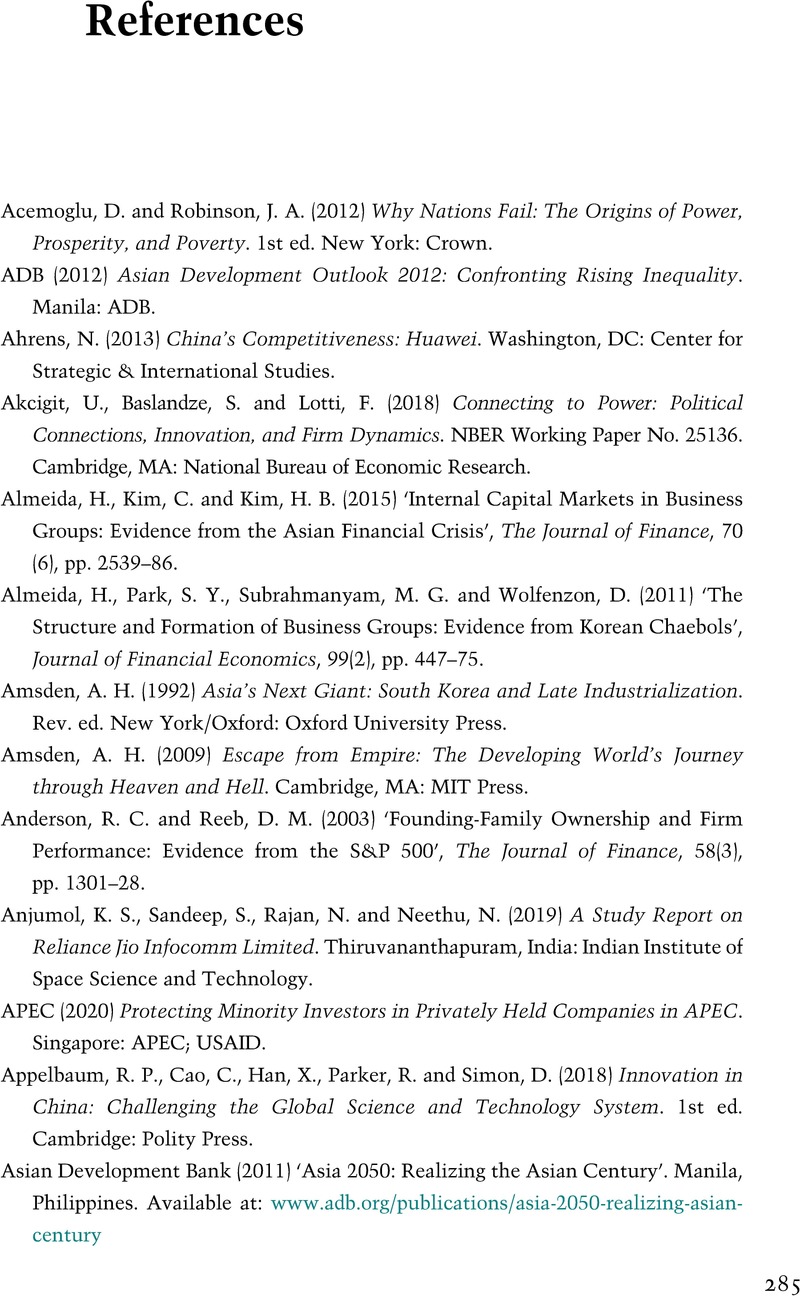Book contents
- The Connections World
- The Connections World
- Copyright page
- Dedication
- Contents
- Figures
- Colour Plates
- Tables
- Acknowledgements
- Abbreviations
- 1 The Strengths and Fallibilities of Asian Capitalism
- 2 To the Foothills of Everest
- 3 The Power of Networks of Connections
- 4 Networks, Connections and Business Organisation
- 5 What Scope for Innovation?
- 6 Employment in the Connections World
- 7 Whither Asia?
- References
- Index
- References
References
Published online by Cambridge University Press: 11 October 2022
- The Connections World
- The Connections World
- Copyright page
- Dedication
- Contents
- Figures
- Colour Plates
- Tables
- Acknowledgements
- Abbreviations
- 1 The Strengths and Fallibilities of Asian Capitalism
- 2 To the Foothills of Everest
- 3 The Power of Networks of Connections
- 4 Networks, Connections and Business Organisation
- 5 What Scope for Innovation?
- 6 Employment in the Connections World
- 7 Whither Asia?
- References
- Index
- References
Summary

- Type
- Chapter
- Information
- The Connections WorldThe Future of Asian Capitalism, pp. 285 - 302Publisher: Cambridge University PressPrint publication year: 2022

